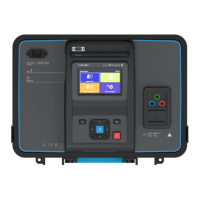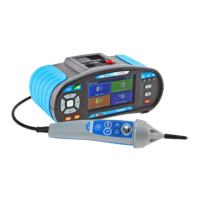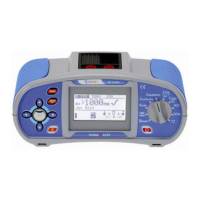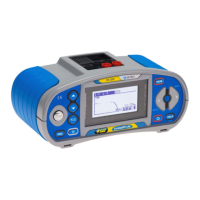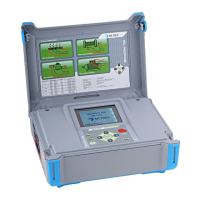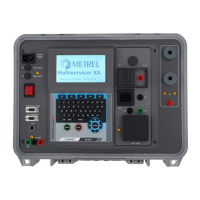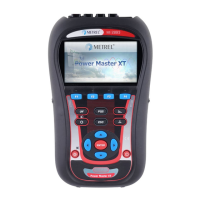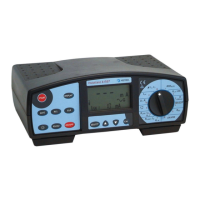MI 3125 / MI 3125E EurotestCOMBO Start-up guide
4
1 Start-up guide
1.1 Safety and operational considerations
Warnings
This document is not a supplement to the Instruction manual!
The symbol on the instrument means »Read the Instruction manual with
special care for safe operation«. The symbol requires an action!
If the test equipment is used in a manner not specified in this user manual, the
protection provided by the equipment could be impaired!
Read this user manual carefully, otherwise the use of the instrument may be
dangerous for the operator, the instrument or for the equipment under test!
Do not use the instrument or any of the accessories if any damage is noticed!
If a fuse blows in the instrument, follow the instructions in this manual in order to
replace it!
Consider all generally known precautions in order to avoid risk of electric shock
while dealing with hazardous voltages!
Do not use the instrument in supply systems with voltages higher than
550 V!
Service intervention or adjustment is only allowed to be carried out by a
competent authorized personnel!
Use only standard or optional test accessories supplied by your distributor!
Consider that protection category of some accessories is lower than of the
instrument. Test tips and Tip commander have removable caps. If they are
removed the protection falls to CAT II. Check markings on accessories!
(cap off, 18 mm tip)…CAT II up to 1000 V
(cap on, 4 mm tip)… CAT II 1000 V / CAT III 600 V / CAT IV 300 V
The instrument comes supplied with rechargeable Ni-Cd or Ni-MH battery cells.
The cells should only be replaced with the same type as defined on the battery
compartment label or as described in this manual. Do not use standard alkaline
battery cells while the power supply adapter is connected, otherwise they may
explode!
Hazardous voltages exist inside the instrument. Disconnect all test leads, remove
the power supply cable and switch off the instrument before removing the battery
compartment cover.
All normal safety precautions must be taken in order to avoid risk of electric
shock while working on electrical installations!
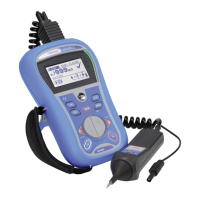
